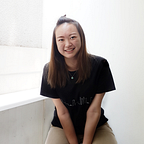Thin Concrete Shell Structure: Experiment 02.01
Published in
2 min readOct 31, 2017
Second attempt at Experiment 02, perfecting the technique.
Previous experiment could be read here:
Materials
- Needle punch non-woven fabric
- Timber for frame
- Wire mesh
- Strings
- Paperclips as hooks
- Cement
Method
- Build the timber frame
- Add wire mesh on the timber frame for the fabric to hang from
- Wrapped strings around the frame
- Cut the fabric following the print out squished Rhino model
- Use paperclips to make hooks and put it through the fabric in the anchor points marked from the print out
- Soak the fabric in cement
- Hook the soaked fabric on to the wire mesh
- Apply cement powder on to the fabric to add thickness and cure the cement faster
- Let dry
- Remove it from the frame and remove the paperclips
Results from the experiment.
- Method (soaking): There is no difference when we soaked the material longer in the cement solution or when the fabric was just dipped in, in the first
- Method (cutting the fabric): Cutting the fabric into the squished rhino shape made the final form more rectangular, although not perfectly squared.
- Method and material (timber frame with wire mesh): Using a wire mesh instead of strings made a significant difference when trying to control the location of the points. With strings, the hooks are able to slide down the string and is difficult to control.
- Final Structure: The underside of the structure had more inconsistency compared to the first experiment. This time, we tried to scoop some cement on our hands to cover the underside when the structure is hung already, but caused the final form to be thicker in some location and looks patchy. The underside of the structure still has bare patches, similar to the first experiment.
